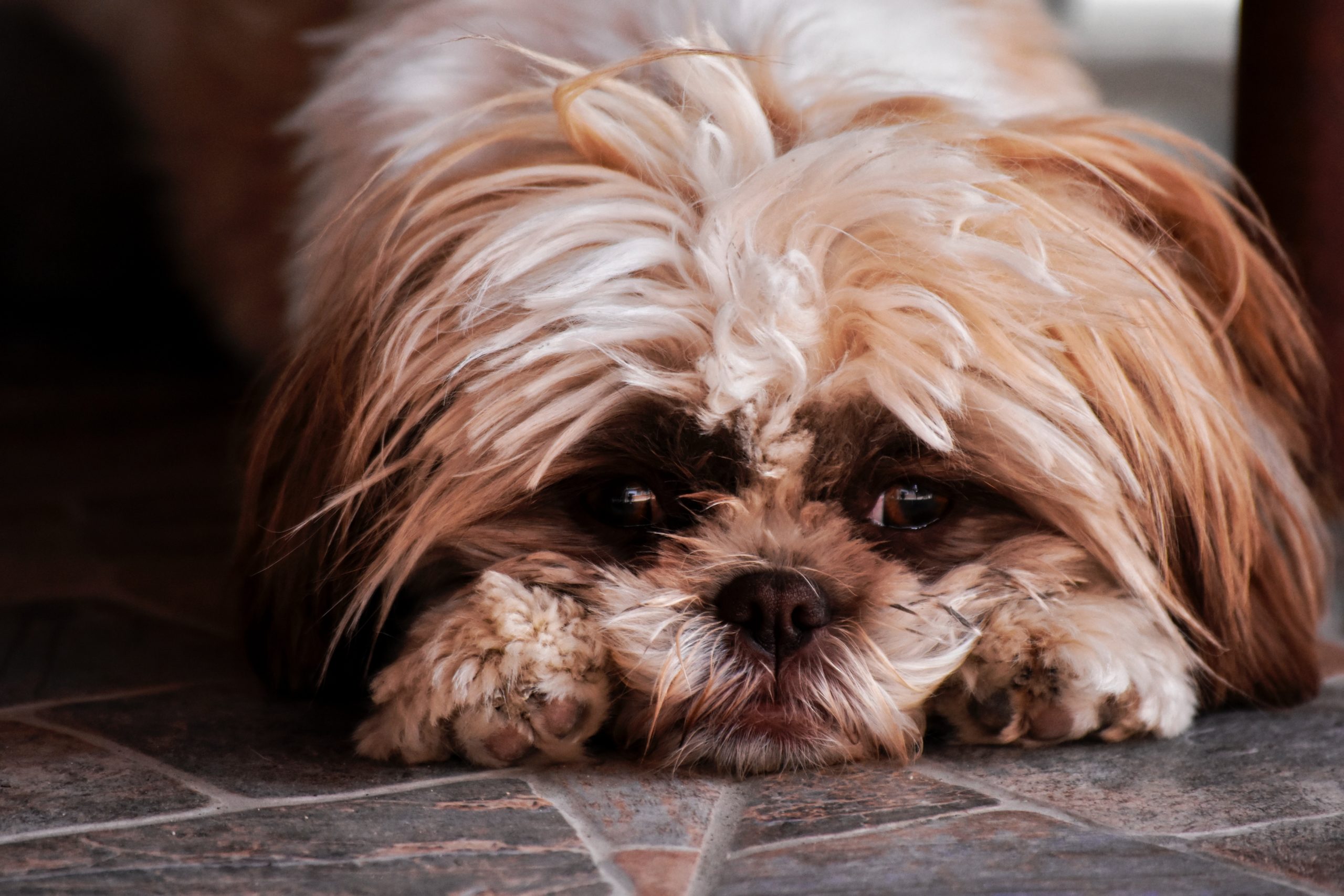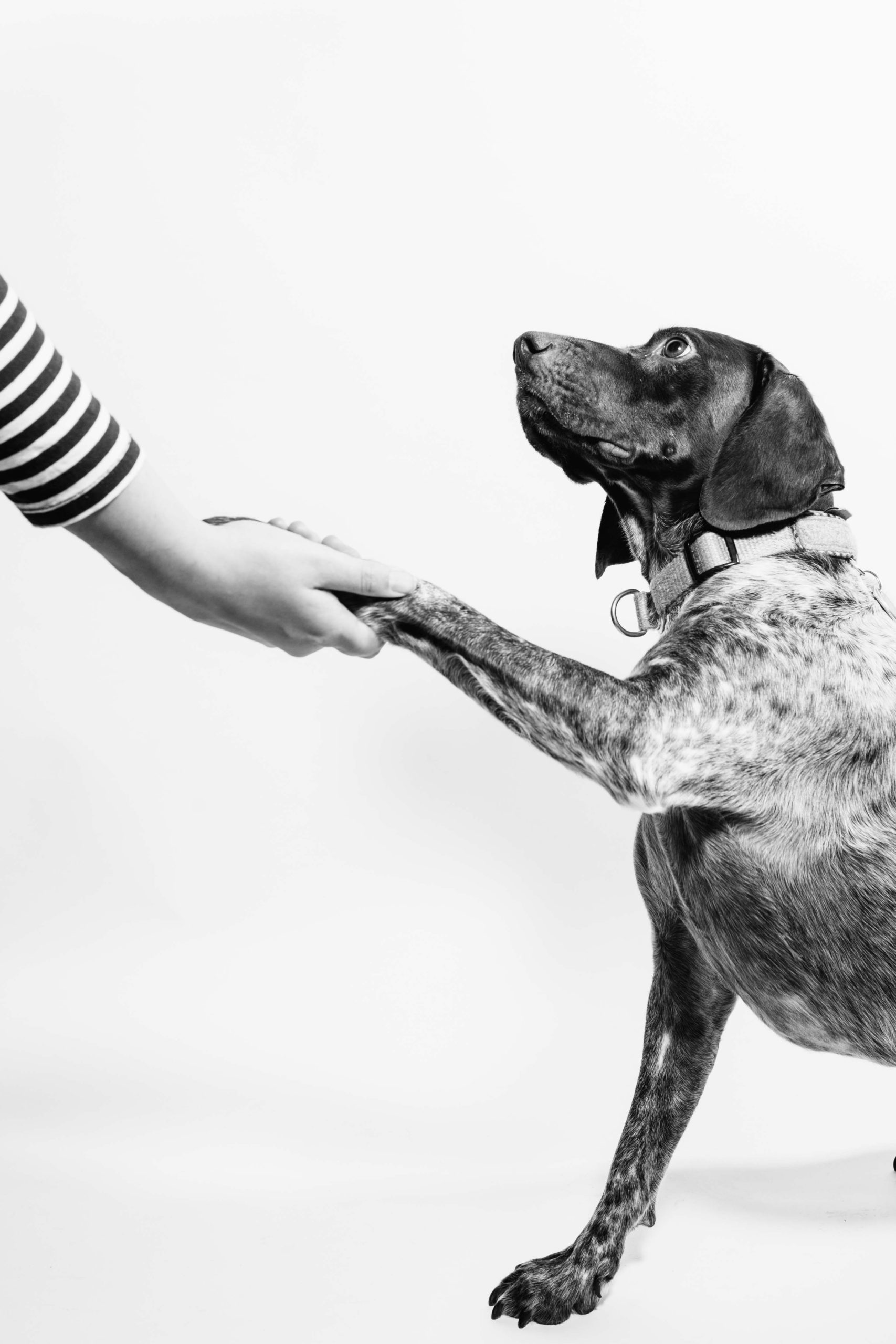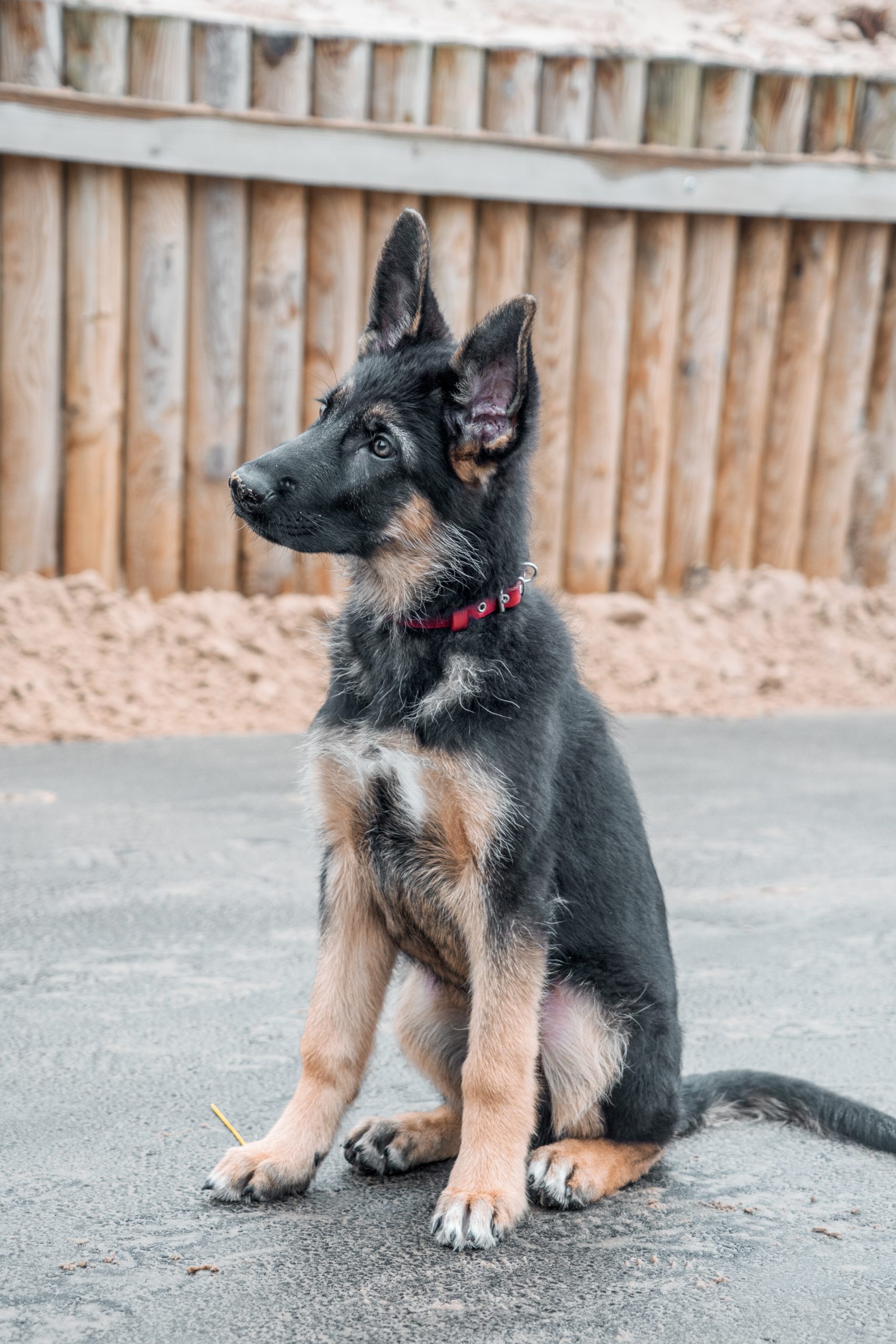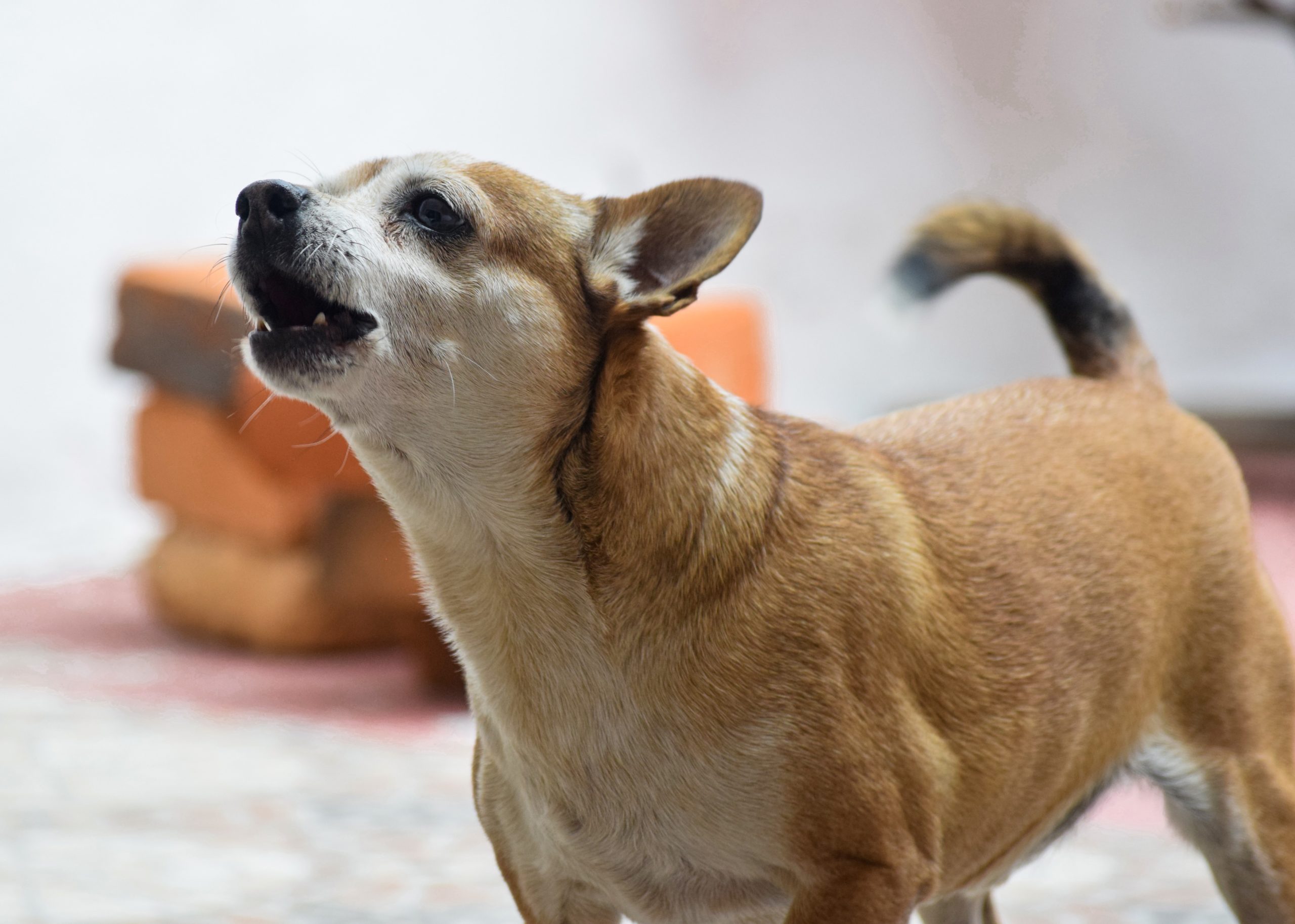Is your furry friend experiencing anxiety, stress, or fear that affects their quality of life? You’re not alone — many dogs suffer from these feelings due to various triggers such as loud noises, separation, or unfamiliar situations.
In this blog post on “how to calm an anxious dog,” we’ll explore the causes and signs of canine anxiety and dive into effective calming techniques and preventative measures.
By understanding your dog’s unique needs and employing the tips offered here, you can help soothe their nerves—whether it’s during a thunderstorm or just another day at home.
Understanding Dog Anxiety
Dog anxiety can be caused by various factors such as genetics, traumatic experiences, and lack of socialization, which may lead to behavioral issues.
Causes And Triggers Of Anxiety
Causes of anxiety in dogs can be numerous and sometimes complex. Some common triggers include changes in the environment, specific situations or objects, separation from their owner, or past trauma – all contributing to feelings of stress and uncertainty for your canine companion.
It’s essential to understand that every dog is unique; what may cause anxiety for one dog might not have any effect on another. Socialization experiences during puppyhood often influence how a dog responds to certain stimuli later in life.
Dogs who were exposed to various environments and situations at an early age tend to adapt better when faced with new challenges compared to those who were sheltered or limited in their exploration opportunities.
By identifying the causes and triggers behind your dog’s anxiety, you’ll be better equipped to implement effective calming techniques tailored specifically for your furry friend’s needs and help them live a happier life free from unnecessary stressors.
Recognizing Signs Of Anxiety In Dogs
Dogs are known to have anxiety just like humans. But unlike us, they can’t express it with words. As a dog owner, you need to be able to recognize the signs of anxiety in your pet so that you can help them feel better.
It’s also essential to look out for subtle changes in their behavior patterns. Changes such as sudden loss of appetite or excessive grooming can indicate stress and anxiety levels rising in your pet.
If left unchecked, anxious behaviors could worsen over time; hence it is crucial that you know what to look out for when trying to identify signs of anxiety in your dog so that effective solutions can be implemented promptly- this includes taking measures such as behavioral modification training which has been shown to alleviate anxieties by promoting positive reinforcement methods during interactions between the owner and their pets.
Being aware of some telling signs will help owners spot when their dogs might be feeling anxious and ways they can work together through techniques best suited for them based on severity.
Calming Techniques For Anxious Dogs
Some effective calming techniques for anxious dogs include exercise and playtime, creating a calming environment, using natural remedies or medications, desensitization, and counterconditioning, as well as physical contact and massage.
Exercise And Playtime
Regular exercise and playtime are essential for keeping your dog healthy both physically and mentally. For anxious dogs, a good workout can help release tension, reduce stress, and promote relaxation.
For example, taking your dog on a long walk or run can tire them out both mentally and physically. Playing games like fetch or tug-of-war can provide mental stimulation while also promoting bonding time with you as their owner.
By incorporating regular exercise into your routine with an anxious pup, you’ll be able to not only help calm them down but also strengthen the bond between you two.
Creating A Calming Environment
To help ease your dog’s anxiety, creating a calm and relaxing environment can make all the difference. First, ensure that your home is free from clutter and chaos as dogs thrive in orderly spaces.
In addition, providing your dog with its designated space where it can retreat when feeling anxious may be helpful. This could be a comfortable bed or crate that has familiar items like toys or blankets with comforting scents.
Using calming products like diffusers and sprays can also assist in creating a tranquil atmosphere for your pooch.
Remember that every dog is unique so some methods may not work for all pups; it’s important to try different things until you find what works best for you and your furry friend while bringing down their stress level at the same time!
Using Natural Remedies Or Medications
Many pet owners prefer to use natural remedies or medications to calm their anxious dogs. Here are some practical options:
- Behavioral modification training involves positive reinforcement techniques that can help your dog overcome anxiety triggers.
- Calming pheromones: These products mimic the calming chemicals produced by mother dogs, which can help reduce anxiety in dogs.
- Supplements: Supplements like Anxitane and Zylkene work to naturally reduce stress levels in dogs.
- Probiotics: The gut-brain connection is real, and supplementing with probiotics can help balance your dog’s mood and stress levels.
- CBD oil: Some pet owners have reported success using CBD oil to calm their anxious dogs. It’s important to consult with a veterinarian before giving your dog any CBD products.
Remember to always consult with a veterinarian before starting any new treatment for your dog’s anxiety.
Desensitization And Counterconditioning
Desensitization and counterconditioning are two of the most effective techniques for treating dog anxiety. They involve gradually exposing your dog to its source of fear or anxiety while pairing it with positive experiences, such as treats or toys.
For example, if your dog is scared of thunderstorms, you would start by playing thunderstorm sounds at a very low volume while giving them treats or engaging in playtime.
Over time, you would increase the volume slowly until they no longer react negatively to the sounds.
Counterconditioning also involves changing how your dog perceives an anxious trigger by associating it with positive experiences.
By implementing these techniques alongside proper socialization and consistent training methods outlined above, you can help reduce anxiety and create a more relaxed environment for both you and your furry friend.
Physical Contact And Massage
Physical contact and massage can be an effective ways to calm an anxious dog. Petting, brushing, or giving your furry friend a good belly rub may help reduce stress and promote relaxation.
The physical touch of the owner provides comfort and reassurance to the dog, making them feel safe and secure.
When massaging a dog, it is essential to start slowly and gently. Begin with light strokes around the neck area while talking in a soft voice. Gradually move towards the back and limbs where there may be more tension due to anxiety.
Pay attention to their reaction; if they seem uncomfortable at any point, stop immediately as this could cause more anxiety rather than relieve it.
Overall physical contact with pets has been shown through scientific studies that it helps reduce stress hormones like cortisol levels in both pets and owners alike; therefore making sure you bond physically with your canine friend regularly is very important for his health!
How To Prevent Dog Anxiety
Preventing dog anxiety requires positive reinforcement training, gradual exposure to triggers, consistent routine and behavior, proper socialization, and avoiding punishment; learn more about these methods and keep your furry friend calm and stress-free.
Positive Reinforcement Training
One of the most effective ways to prevent and manage dog anxiety is through positive reinforcement training. This training method involves rewarding your dog for good behavior, rather than punishing them for bad behavior.
For example, if your dog becomes anxious when left alone at home, you can use positive reinforcement training by gradually increasing the time they are left alone and rewarding them with treats or affection when they remain calm.
Over time, this helps build their confidence and reduces their fear of being alone. Positive reinforcement techniques also promote bonding between owners and pets.
Training sessions should be kept short and frequent so that dogs don’t get overwhelmed or discouraged. It’s essential to stay consistent with rewards even if progress is slow because once dogs associate a reward with good behavior that behavior will quickly become ingrained.
Gradual Exposure To Anxious Triggers
Gradual exposure to anxious triggers is a technique used to desensitize your dog and reduce their anxiety. Here are some steps you can take:
- Identify the trigger: Determine what is causing your dog’s anxiety, whether it’s loud noises or new people.
- Introduce the trigger slowly: Start by exposing your dog to a low level of the trigger, such as playing a recording of thunder at a low volume.
- Reward calm behavior: Praise and reward your dog when they remain calm in the presence of the trigger.
- Increase exposure gradually: Over time, gradually increase the intensity or duration of exposure to the trigger as your dog becomes more comfortable.
- Be patient: This technique requires patience and consistency. Don’t rush the process, and remember that progress may be slow.
By gradually exposing your dog to its source of anxiety in a controlled environment, you can help them overcome their fear and reduce their overall anxiety levels.
Consistent Routine And Behavior
Dogs thrive on routine, and maintaining a consistent schedule can help reduce anxiety in your furry friend. Dogs are creatures of habit, so establishing a regular routine for feeding, exercise, and playtime can help them feel safe and secure.
Consistency in training and behavior is also crucial when dealing with anxious dogs.
For example, if you have an anxious dog who becomes uneasy during storms or loud noises, establish a calming routine by creating a safe space for them inside the house.
You could create an area where they feel comfortable such as under the bed or in their crate with familiar items like blankets and toys.
Additionally, it’s essential to avoid punishing anxious behavior as it may worsen the situation. Instead, use positive reinforcement techniques such as treats whenever they show calmness even after the slightest progress towards relaxation during nervous times.
Proper Socialization
It cannot be overstated how much proper socialization can benefit dogs and prevent anxiety issues. Dogs that are not well socialized may develop fear of people, other dogs, or new environments which can lead to anxious behavior.
Socialization should begin when the dog is still a puppy by introducing them to different types of people, animals, and experiences in a positive manner. This process helps them learn how to cope with new experiences without feeling fearful or threatened.
In addition to improving their confidence and ability to handle new situations, proper socialization also enhances their communication skills with both humans and other animals.
It decreases the chances of separation anxiety developing later on as they grow older because they have learned healthy coping mechanisms for being alone for short periods of time while remaining calm and relaxed.
Avoiding Punishment Or Negative Reinforcement
It’s important to avoid punishment or negative reinforcement when dealing with an anxious dog. Punishment can increase anxiety, fear, and aggression in dogs. Instead, try using positive reinforcement techniques such as rewards for good behavior.
Negative reinforcement, such as removing food or toys as a punishment for undesirable behavior is not recommended either.
Consistent positive training methods will help build trust between you and your furry friend while reducing their anxiety over time.
In summary, avoiding punishment or negative reinforcement is crucial in helping anxious dogs cope with their anxiety effectively.
Conclusion
In conclusion, anxiety in dogs is a common issue that pet owners must address. Understanding the triggers and signs of anxiety in your pup is the first step to creating a calm environment.
From exercise to natural remedies, there are many techniques available to help soothe an anxious dog. Prevention through positive reinforcement training and socialization can also reduce the chances of developing anxiety.
Always remember that patience and consistency are key when dealing with an anxious dog, as it may take time for them to fully overcome their fears.
FAQs:
1. What are some signs that my dog is anxious?
Dogs may display a variety of behaviors when feeling anxious such as pacing, whimpering or shaking, avoiding eye contact, increased panting or drooling, and destructive chewing.
2. How can I calm down my anxious dog?
Help your dog calm down by creating a predictable routine with consistent training and exercise schedules to alleviate any pent-up energy. Providing soothing music or white noise in the background while offering treats or toys to focus their attention on might help distract them from anxiety triggers like loud noises outside (i.e., thunderstorms/fireworks). Additionally – using pheromonal products like natural sprays, bedding pads, etc. designed specifically for calming dogs could be quite effective.
3. Can behavioral training help an anxious dog?
Yes! Behavioral training focused on reducing stressors can be very helpful for anxious dogs because it provides education about why certain reactions occur & how to retrain our pet companions towards more neutral responses over time through positive reinforcement techniques consistently used during sessions.
4. When should I seek professional help for my dog’s anxiety?
If you have tried multiple strategies but have not seen improvement then seeking out veterinary care (i.e., medication/behavioral solutions) may be necessary – this often includes pharmaceuticals prescribed by veterinarians – to reduce trauma-related symptoms resulting from chronic stressors within their environment/home life which sometimes won’t necessarily respond as effectively to home-remedies alone



